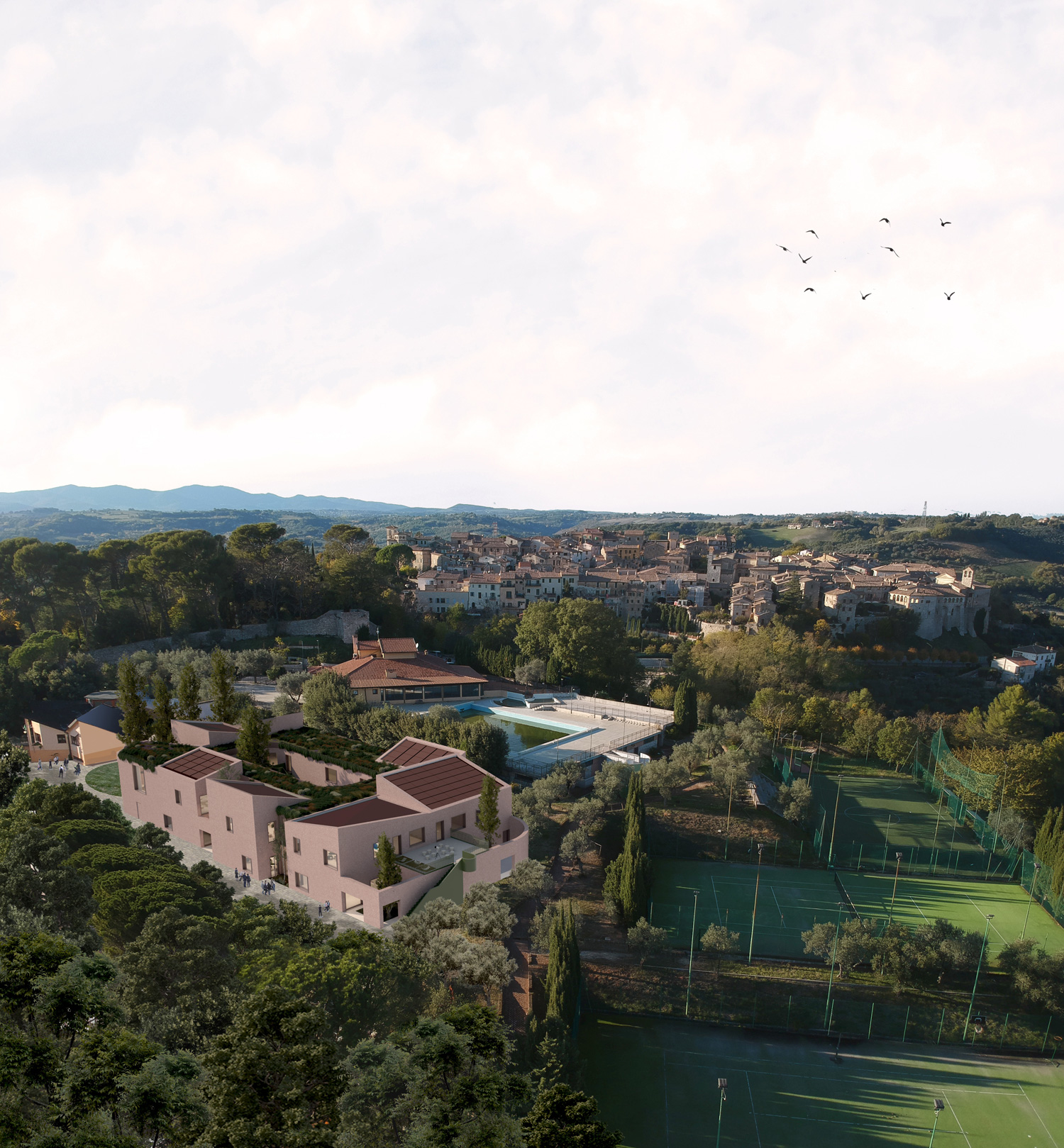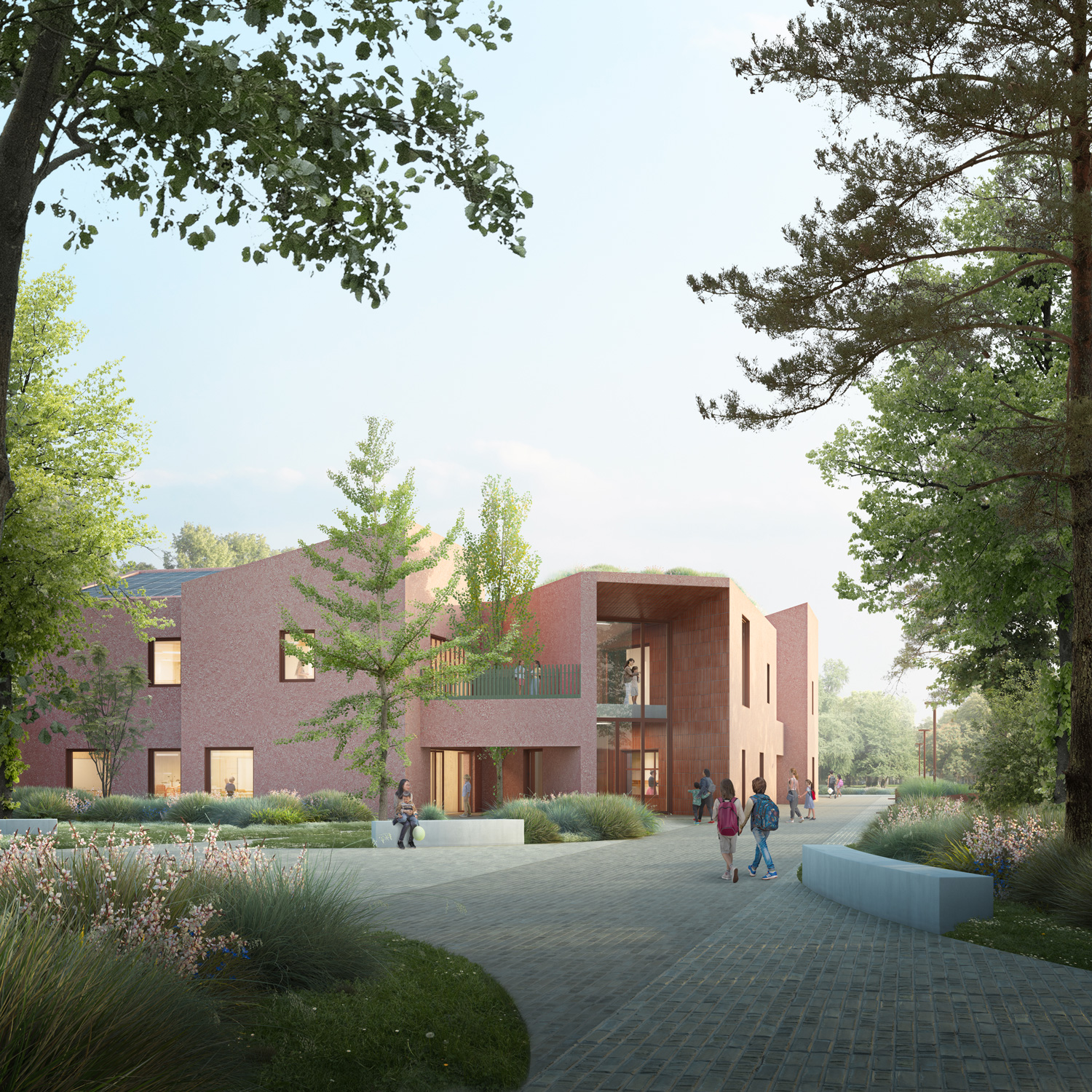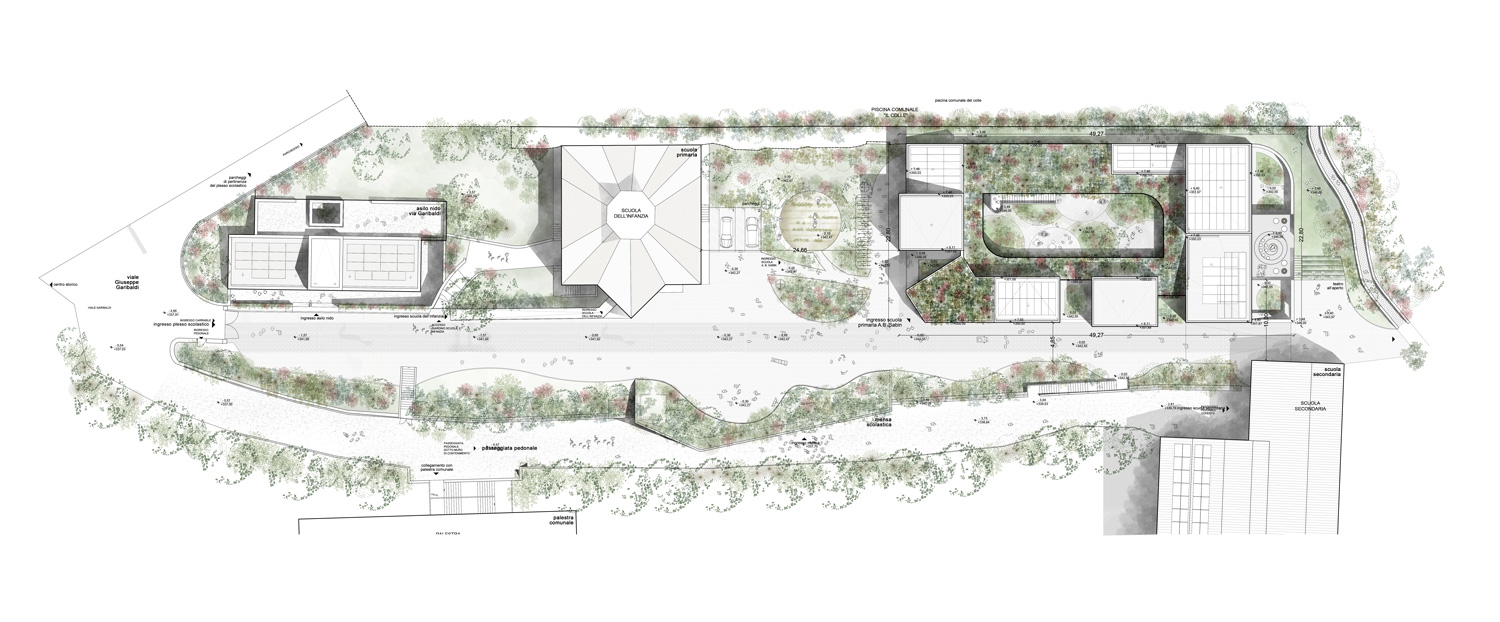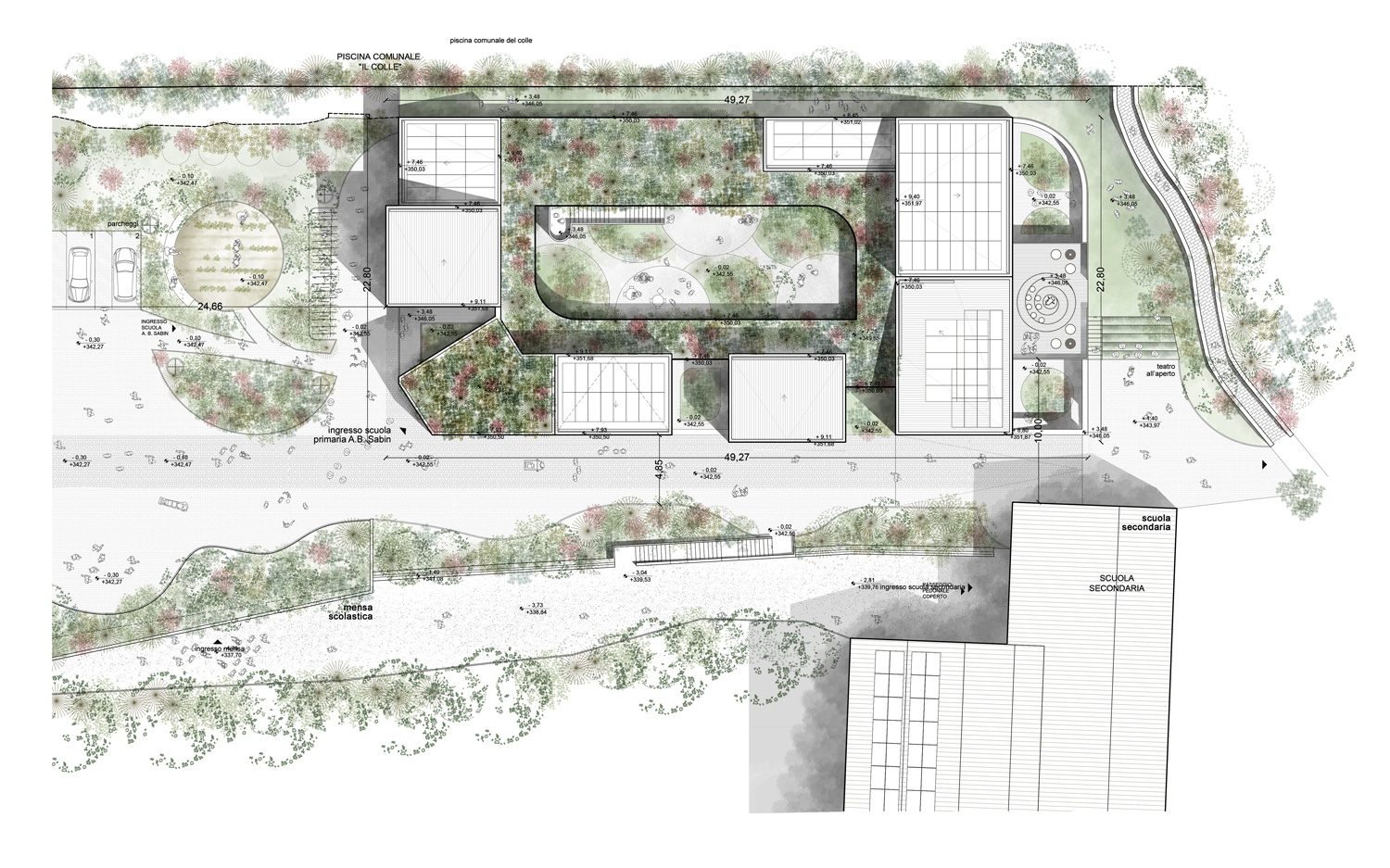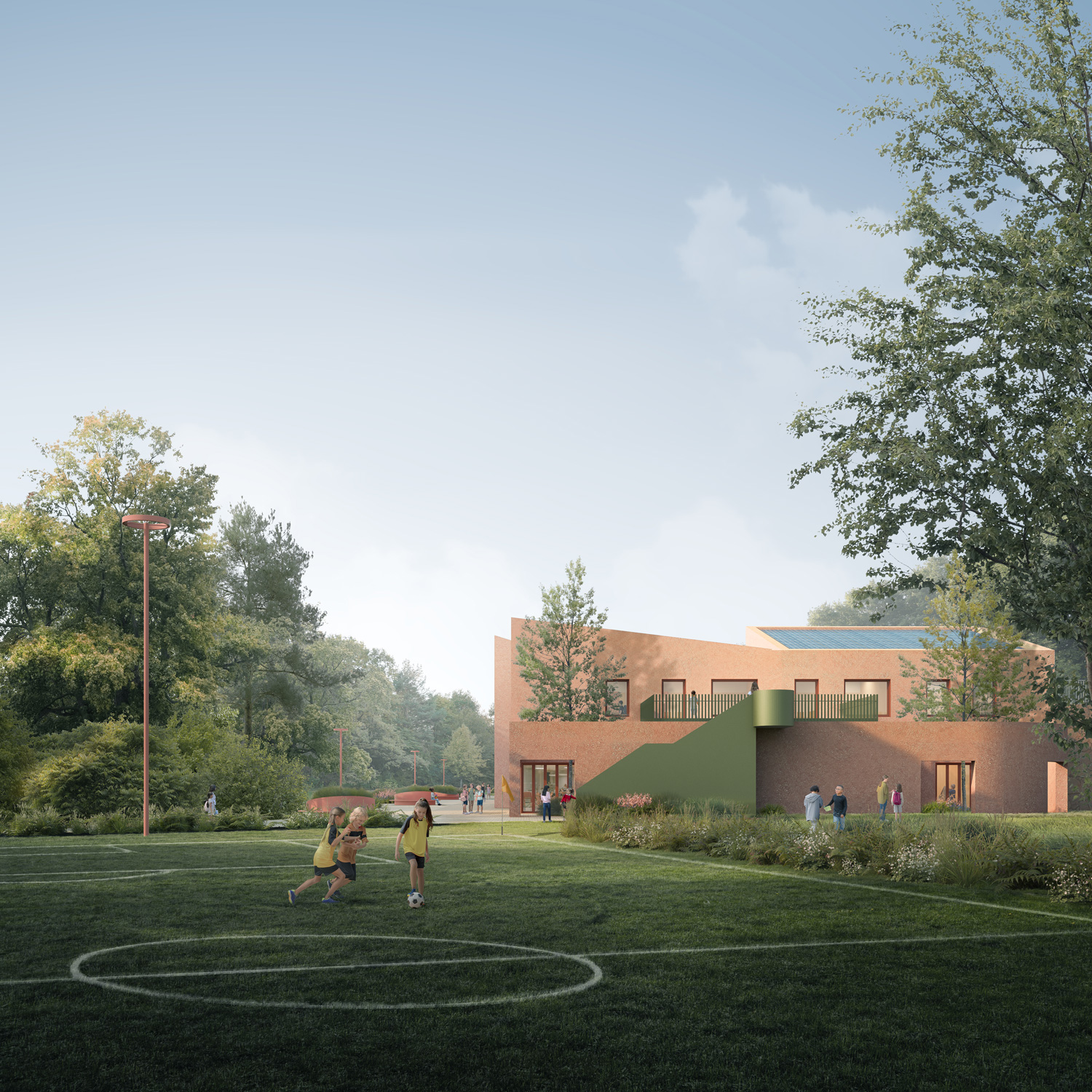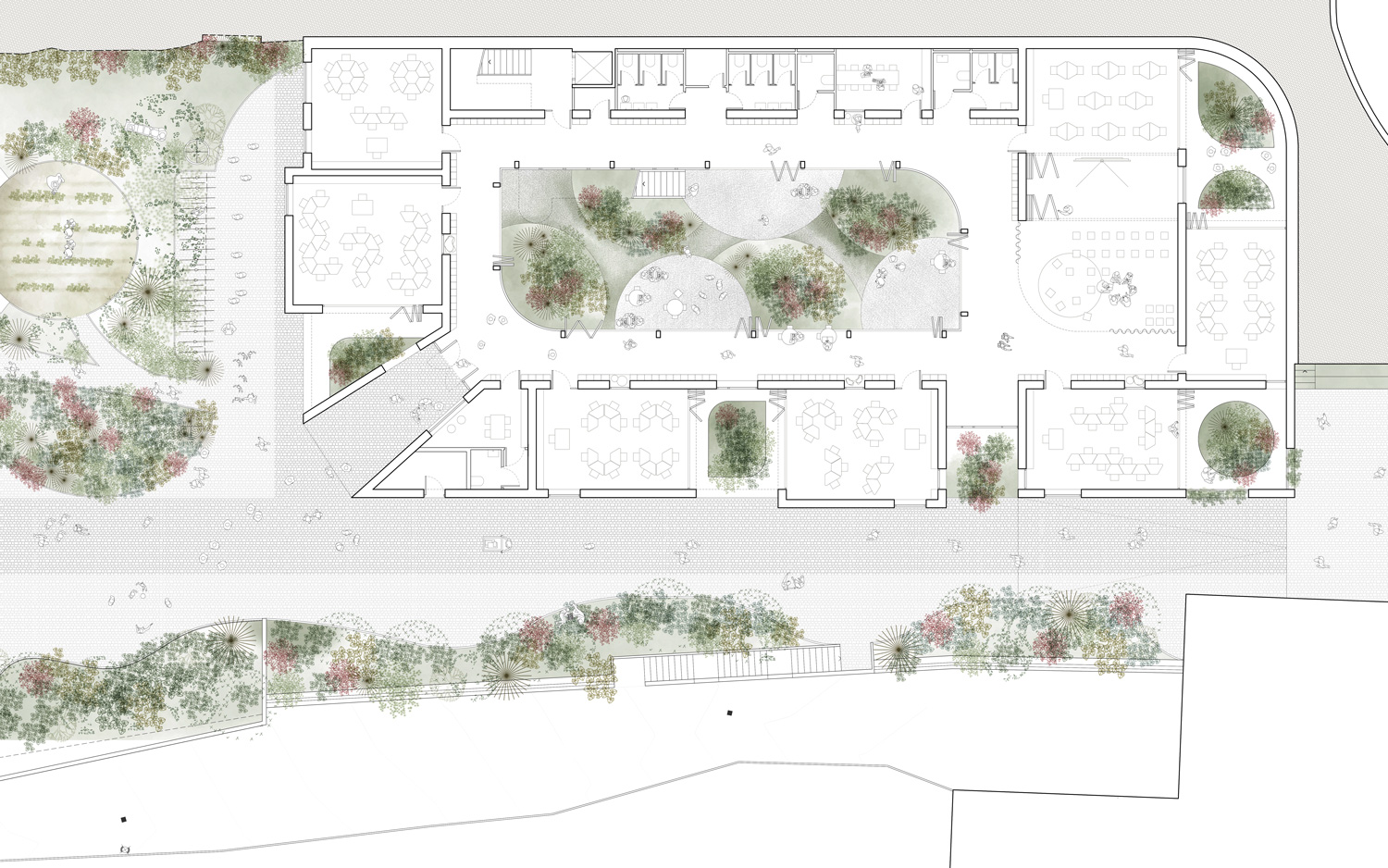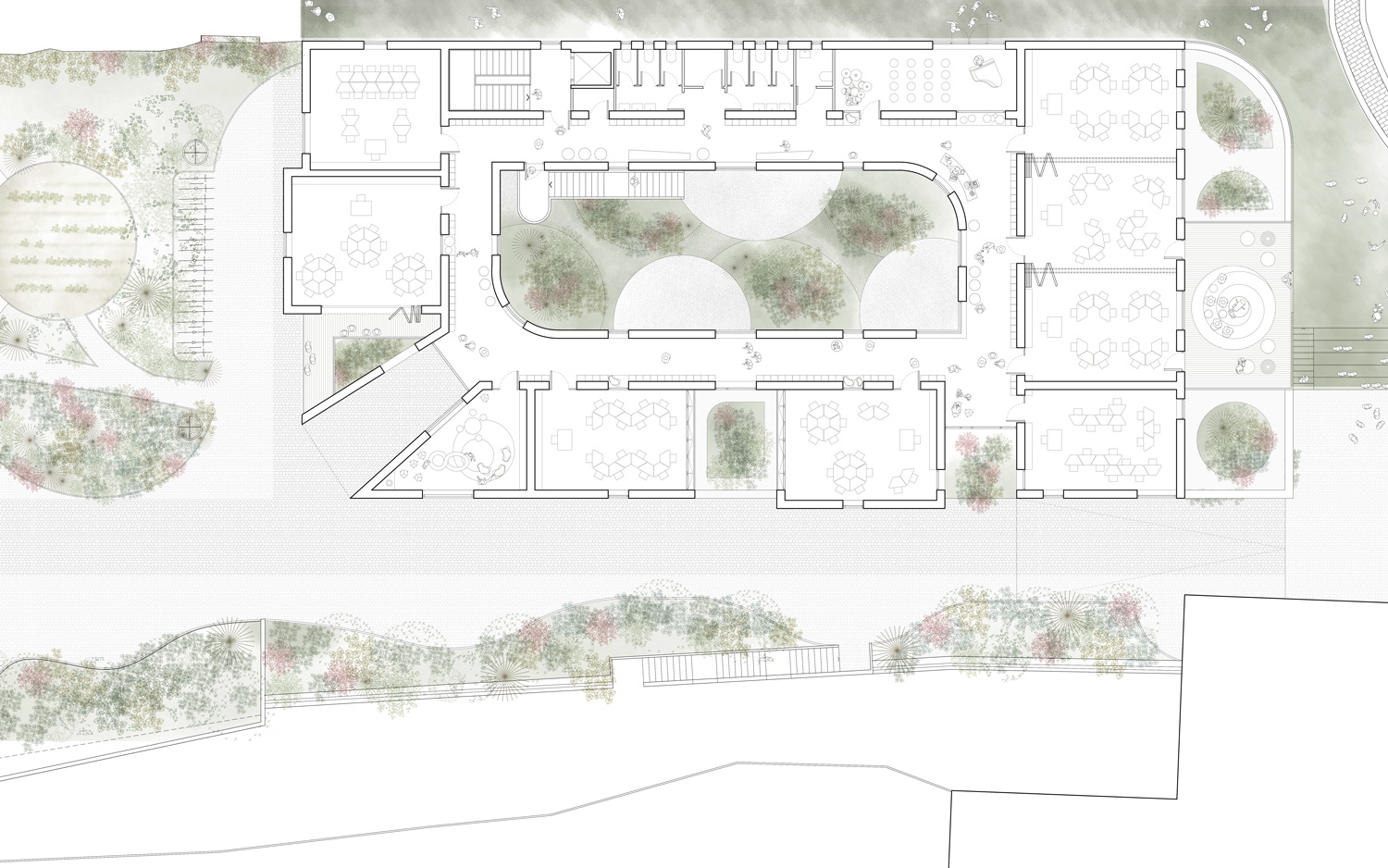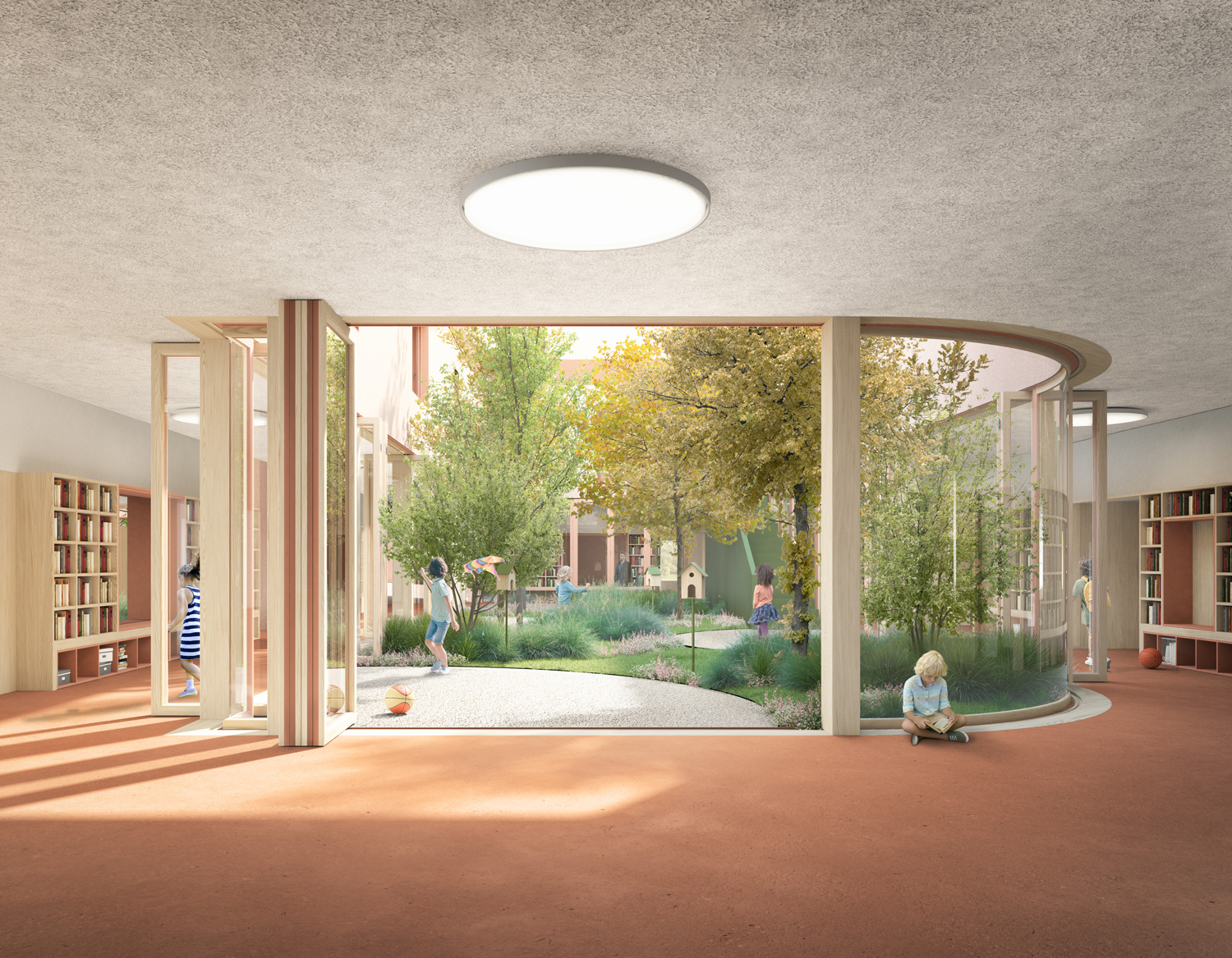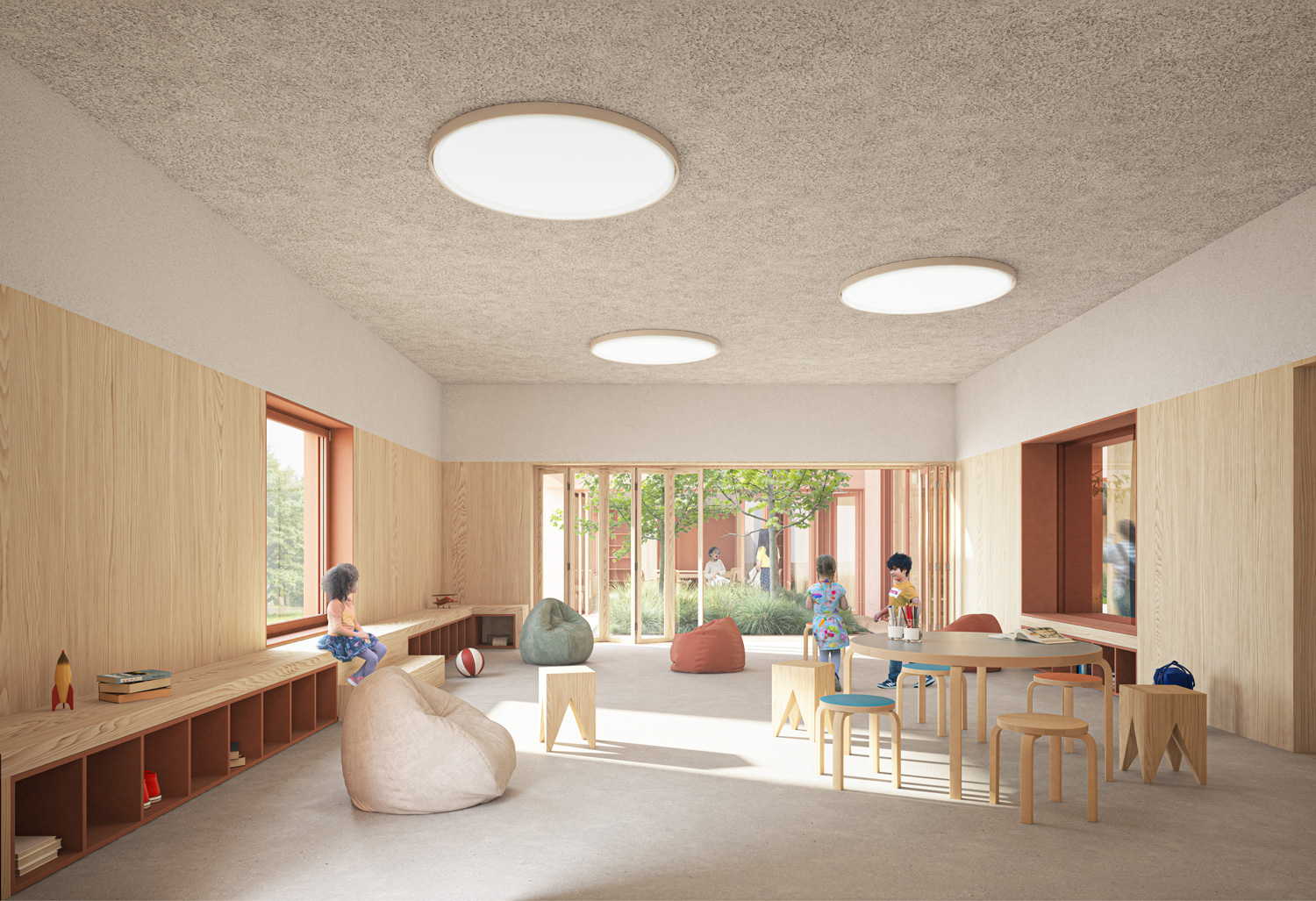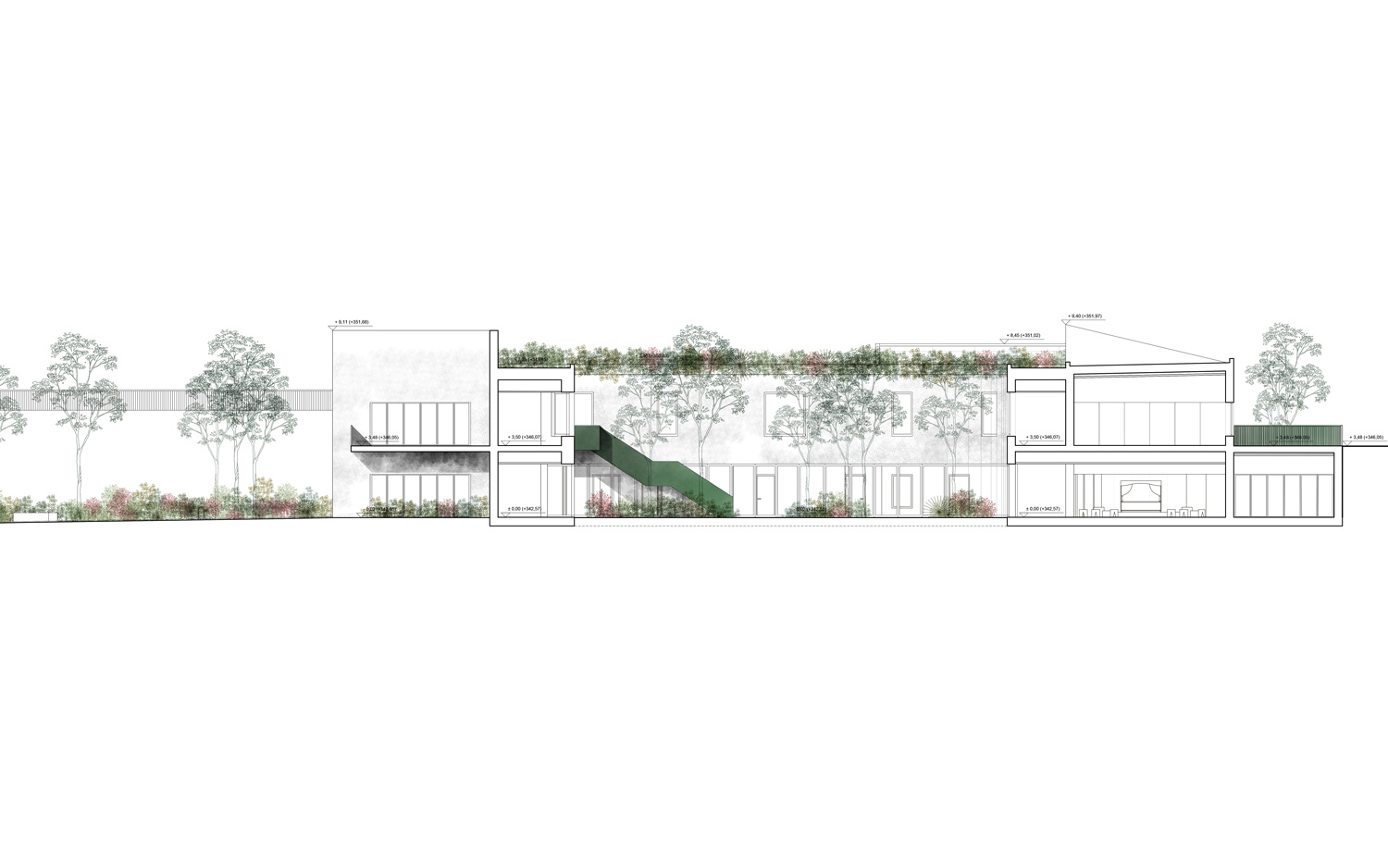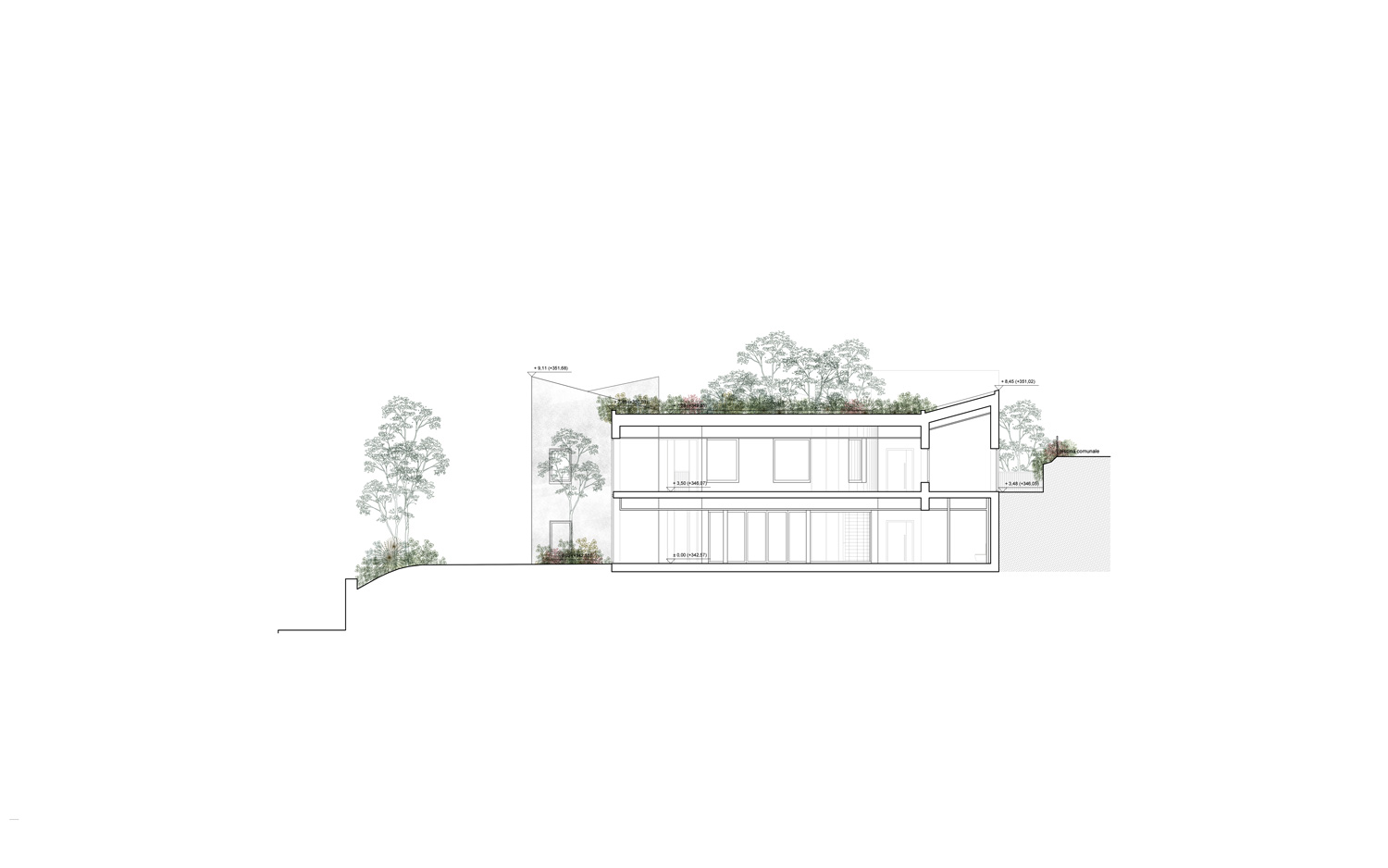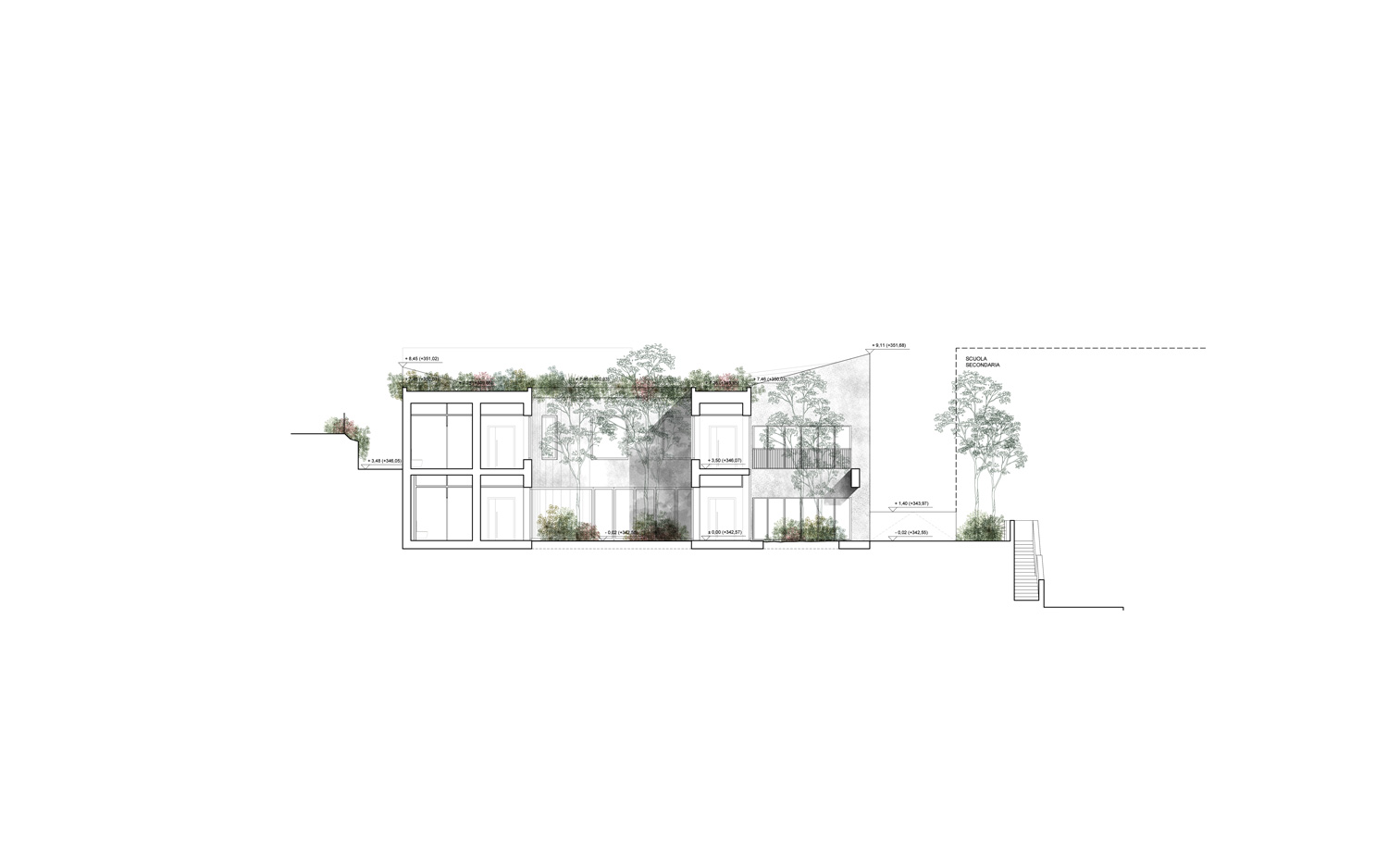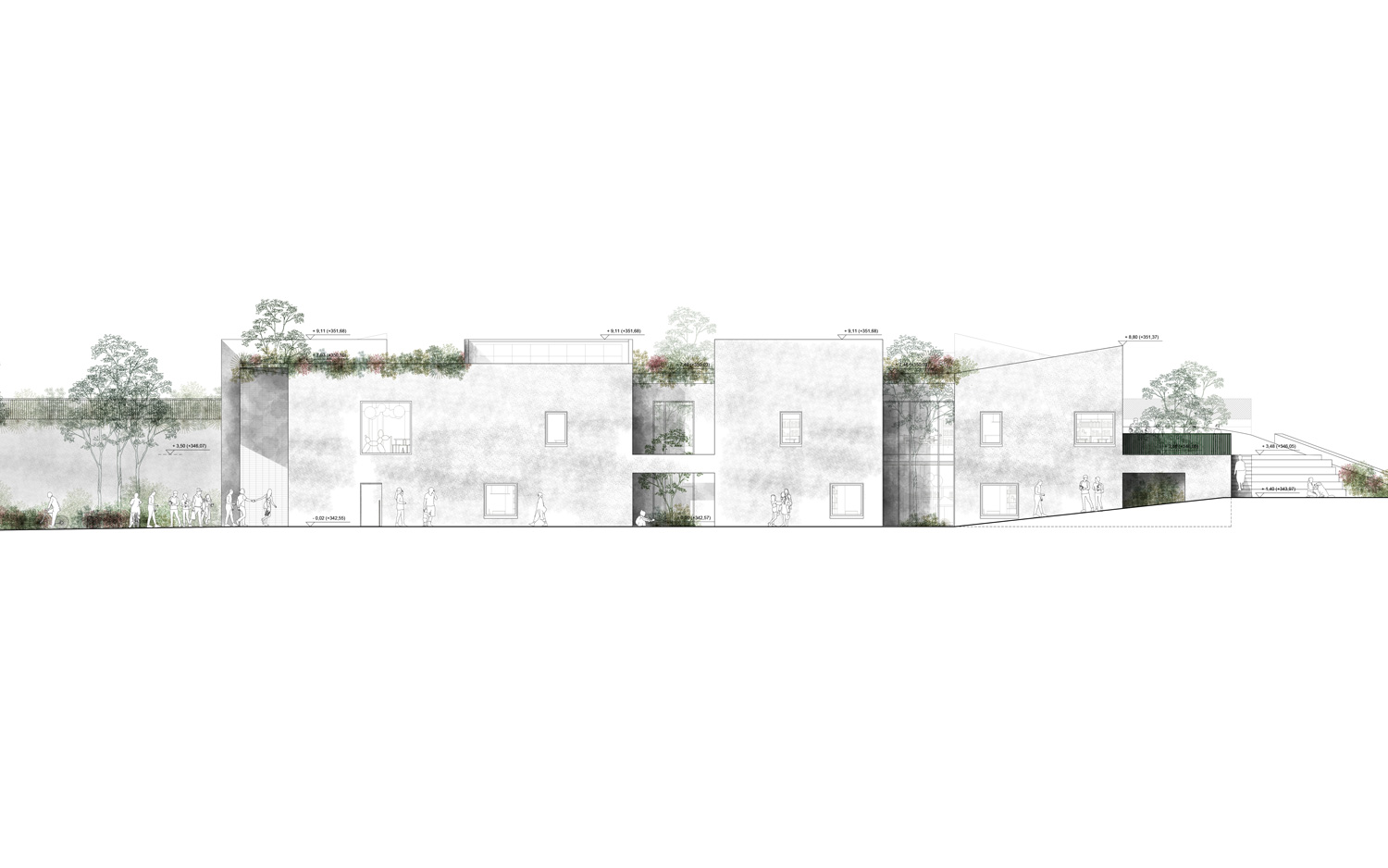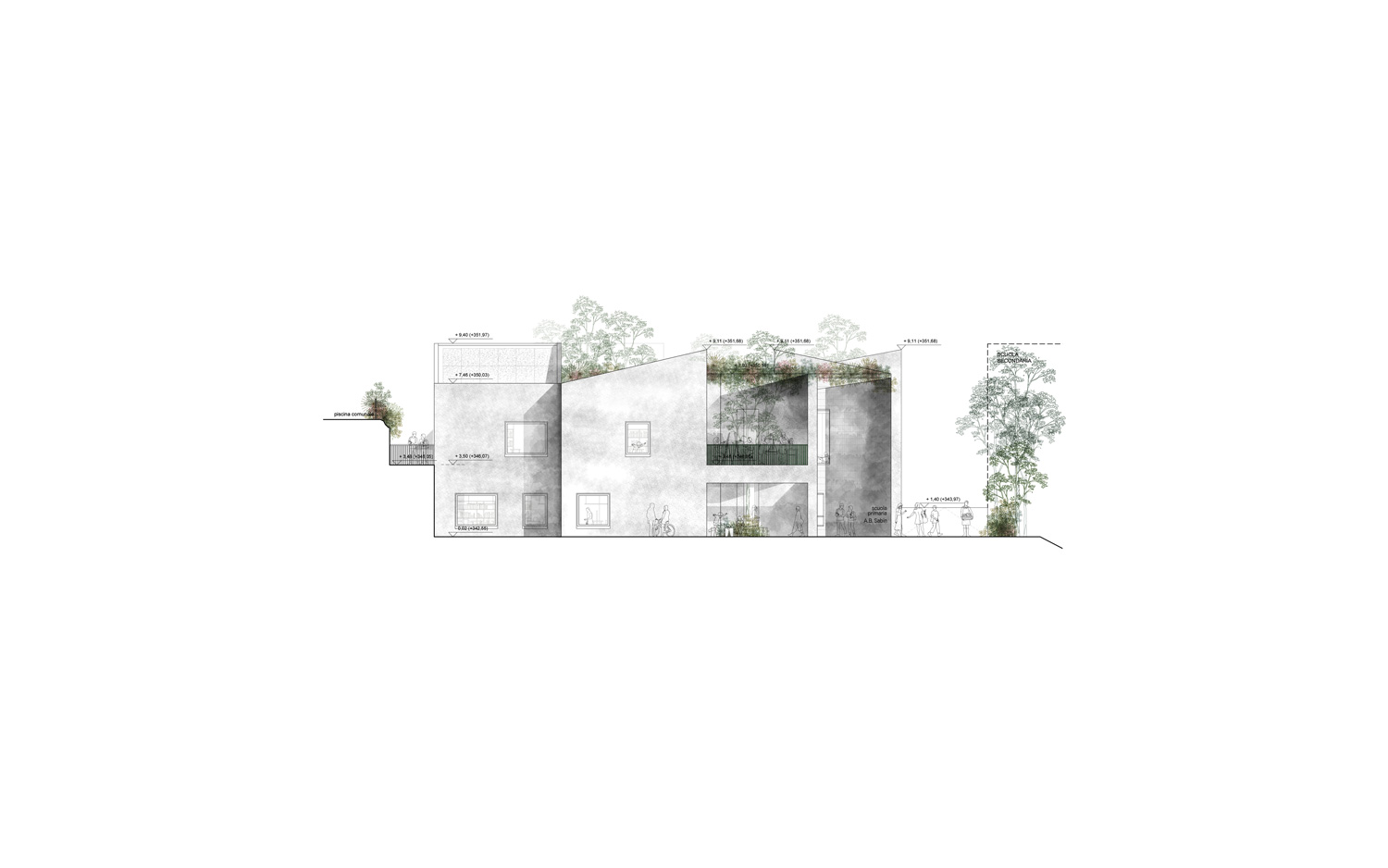☉ New primary school Albert Bruce Sabin is a winning proposal by Matteo Romanelli for Comune di San Gemini in 2023. It is located in San Gemini Italy in a park setting. Its scale is medium with a surface of 1.228 sqm a budget of 3.598.582 € and a ratio of 2.930 €/sqm. Key material is brick. Lens Images collaborated as visualizer.
The shape of the new primary school Albert Bruce Sabin takes up a typological character that we find in the physiognomy of the historic center of San Gemini: the union of the volumes that over time were born and developed in close relationship with each other, coming together in a symbiotic way and in some cases leaving space for green courtyards. Just as the country is seen, for the study of forms and matter, as a macro-school, the school is understood as a childfriendly micro-country, in which the relationships between space and learning can be explored. Giving shape becomes the link with pedagogy: the training process becomes a metaphor for the psychophysical and intellectual development of children. The study of the shape makes the project more intimate for young users, as the conformation and movement of the roofs recall aspects familiar to village life.
The urban and environmental context in which the new school A. B. Sabin is called «Il Colle», a large green park close to the medieval walls of San Gemini, within which there are already various public services, potential for the entire area. The project proposal on an urban scale is based on the idea of «Il Colle» as a child-friendly and safe campus, in which it isn’t possible to pass by private vehicles (with the exception of emergency vehicles, supplies, public transport and people with disabilities), but using only pedestrian and cycle paths, which are of limited length and difference in height. Vehicle traffic develops around the urban park, served by five car parks where private vehicles can be left and easily entered into the campus area.
The new school is designed to open up completely to the surrounding green spaces, both visually and physically. The natural element enters inside the building and communicates with it, allowing children to establish an empathic and emotional bond with the surrounding greenery, according to the principles of outdoor education and biophilia, or fascination (characteristic of nature of shifting attention) and affiliation (affective bond with certain forms of life) which have the power to positively influence the pedagogical path of children. All the green spaces designed are places in which to carry out activities and experiences in close contact with nature.
The design of the new school complex begins with the reorganization of the accesses from via Garibaldi, enhancing the green areas, creating more areas with an irregular rhythm and breaking the monotony of the current situation: the new design of the public space is characterized by a set of sinuous curves that welcome the green areas and seats, which act as meeting points at the entrances to the new primary and secondary school buildings. A square with a large garden connects and at the same time outlines the public space between the nursery school and the new building, leaving an adequate percentage of permeable ground surface.
The educational garden is the fulcrum of this new square, in which children can learn about the land and its products. All external arrangements are structured to ensure accessibility to emergency vehicles, firefighters and ambulances, three parking spaces are provided for people with reduced mobility. With the aim of encouraging gentle and sustainable mobility, numerous bicycle stations are planned near the entrance to the new primary school. The project, respecting the contents and indications of the environmental restriction falling on the intervention area, is characterized by materials and forms that continuously dialogue with the surrounding context.
The school A. B. Sabin, which will have to accommodate 250 students, is made up of 15 classes divided into two levels connected by a staircase with lift to make the building completely accessible. The internal spaces, which are characterized by complete openness and mutability, are designed with the child at the centre. All the areas of the school are designed to play an active role in the training path: the corridor around the central courtyard is not a simple connective space but becomes the agora of the new school, the beating heart of the building, a meeting place, comparison, research and exchange, in which the children are completely surrounded by the shelves of books in the library which opens completely to the school. A space designed as a continuously transforming square, in which children can move curtains and sliding panels independently, creating small clusters, spaces beyond defined classes, in which they can carry out specific activities in small groups.
Furthermore, the limit between external and internal becomes thinner to the point that the distinction is lost: the garden and the large agora become a unicum where each student can build and choose his own path in full autonomy and freedom. All the environments are designed following the «design for all» criteria, in continuity with the manifesto for new generation educational spaces, as regards the finishes (different grain sizes of the plaster to identify the spaces), the colors and the furnishings. The school furniture is designed with ergonomic and functional requirements, but also playful and educational, since all the objects have been designed to be extensions of the hand and the mind, real learning tools.
The space understood as a third educator is composed of objects that are not silent, but are transmitters of culture and also help to stimulate, through manipulation, the breaking of the rigid patterns in which traditional teaching is often stuck. The green spaces play a central role in the distribution organization of the new school: small gardens that transform when necessary into LEAF laboratories (Affective Ecology Laboratories) and the large central open space. Microcosms where students and teachers can explore while having direct, continuous contact with nature. These gardens, in addition to multiplying the interaction between classes, are real green centers that improve natural ventilation and offer refreshment to users during the hottest hours.
